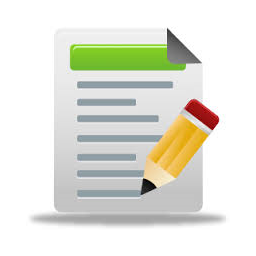Geography
CBSE class 11 Geography exam material includes syllabus, question papers, online tests and important questions as per CBSE syllabus. Notes, test papers and school exam question papers with solutions. The topics included are Geography As A Discipline, The Origin And Evolution Of The Earth, Interior of the Earth, Distribution of Oceans and Continents, Minerals and Rocks, Geomorphic Process, Landforms and their Evolution, Composition and Structure of the Atmosphere, Solar Radiation, Heat Balance and Temperature, Atmospheric Circulation and Weather System, Water in the Atmosphere, World Climate and Climate Change, Water (Oceans), Movements of Ocean Water, Life On Earth, Biodiversity and Conservation, India: Location, Structure and Physiography, Drainage System, Climate, Natural Vegetation, Soils, Natural Hazards and Disasters.

CBSE, JEE, NEET, CUET
Question Bank, Mock Tests, Exam Papers
NCERT Solutions, Sample Papers, Notes, Videos

myCBSEguide App
Complete Guide for CBSE Students
NCERT Solutions, NCERT Exemplars, Revison Notes, Free Videos, CBSE Papers, MCQ Tests & more.
Download CBSE class 11 Geography material in PDF format. MyCBSEguide provides solved papers, board question papers, revision notes and NCERT solutions for CBSE class 11 Geography. The topics included are Geography As A Discipline, The Origin And Evolution Of The Earth, Interior of the Earth, Distribution of Oceans and Continents, Minerals and Rocks, Geomorphic Process, Landforms and their Evolution, Composition and Structure of the Atmosphere, Solar Radiation, Heat Balance and Temperature, Atmospheric Circulation and Weather System, Water in the Atmosphere, World Climate and Climate Change, Water (Oceans), Movements of Ocean Water, Life On Earth, Biodiversity and Conservation, India: Location, Structure and Physiography, Drainage System, Climate, Natural Vegetation, Soils, Natural Hazards and Disasters.
Part A: Fundamentals of Physical Geography (87 Periods)
Unit-1: Geography as a Discipline (04 Periods)
- Geography as an integrating discipline, as a science of spatial attributes.
- Branches of Geography; Physical Geography and Human Geography.
- Scope and Career Options
Unit-2: The Earth (11 Periods)
- Origin and evolution of the earth; Interior of the earth.
- Wegener's continental drift theory and plate tectonics.
- Earthquakes and volcanoes: causes, types and effects.
Unit-3: Landforms (20 Periods)
- Rocks: major types of rocks and their characteristics.
- Geomorphic processes: weathering, mass wasting, erosion and deposition; soil-formation.
- Landforms and their evolution.
Unit 4: Climate (30 Periods)
- Atmosphere- composition and structure; elements of weather and climate.
- Insolation-angle of incidence and distribution; heat budget of the earth-heating and cooling of atmosphere (conduction, convection, terrestrial radiation and advection); temperature- factors controlling temperature; distribution of temperature-horizontal and vertical; inversion of temperature.
- Pressure-pressure belts; winds-planetary, seasonal and local; air masses and fronts; tropical and extra tropical cyclones.
- Precipitation-evaporation; condensation-dew, frost, fog, mist and cloud; rainfall-types and world distribution.
- World climates-classification Koeppen, Differences in parameter between koeppen &Thornthwaite, Global warming and climatic changes.
- Climate and Global Concerns.
Unit 5: Water (Oceans) (10 Periods)
- Basics of Oceanography
- Oceans - distribution of temperature and salinity.
- Movements of ocean water-waves, tides and currents; submarine reliefs.
- Ocean resources and pollution.
Unit 6: Life on the Earth (OTBA) (07 Periods)
- Biosphere - importance of plants and other organisms; biodiversity and conservation;ecosystem and ecological balance.
Map work on identification of features based on 1 to 6 units on the outline/ Physical/ Political map of the world. (05 Periods)
Part – B: India - Physical Environment (78 Periods)
Unit-7: Introduction (04 Periods)
- Location, space relations, India's place in the world.
Unit-8: Physiography (28 Periods)
- Structure and Relief; Physiographic Divisions.
- Drainage systems: Concept of river basins, Watershed; the Himalayan and the Peninsular rivers.
Unit-9: Climate, Vegetation and Soil (28 Periods)
- Weather and climate - spatial and temporal distribution of temperature, pressure winds and rainfall, Indian monsoon: mechanism, onset and withdrawal, variability of rainfalls: spatial and temporal; use of weather charts; Climatic types (Koeppen).
- Natural vegetation-forest types and distribution; wild life; conservation; biosphere reserves.
- Soils - major types (ICAR's classification) and their distribution, soil degradation and conservation.
Unit-10: Hazards and Disasters: Causes, Consequences and Management (14 Periods)
- Floods, Cloudbursts
- Droughts: types and impact
- Earthquakes and Tsunami
- Cyclones: features and impact
- Landslides
Map Work of features based on above units for locating and labelling on the Outline/Political/Physical map of India. (04 Periods)
Open Text based Assessment (05 Periods)
Part – C: Practical Work (50 Periods)
Unit-1: Fundamentals of Maps (20 Periods)
- Geo spatial data, Concept of Geographical data matrix; Point, line, area data.
- Maps -types; scales-types; construction of simple linear scale, measuring distance; finding direction and use of symbols.
- Map projection- Latitude, longitude and time, typology, construction and properties of projection: Conical with one standard parallel and Mercator's projection. (only two projections)
Unit 2: Topographic and Weather Maps (30 Periods)
- Study of topographic maps (1 : 50,000 or 1 : 25,000 Survey of India maps); contour cross section and identification of landforms-slopes, hills, valleys, waterfall, cliffs; distribution of settlement.
- Aerial Photographs: Types and Geometry-vertical aerial photographs; difference between maps and aerial photographs; photo scale determination. Identification of physical and cultural features.
- Satellite imageries, stages in remote sensing data-acquisition, platform and sensors and data products, (photographic and digital).
- Use of weather instruments: thermometer, wet and dry-bulb thermometer, barometer, wind vane, rain gauge.
Practical Record Book and Viva Voce
Viva to be based on Practical Unit I and II only.

myCBSEguide
Trusted by 1 Crore+ Students

Test Generator
Create papers online. It's FREE.

CUET Mock Tests
75,000+ questions to practice only on myCBSEguide app
 myCBSEguide
myCBSEguide



